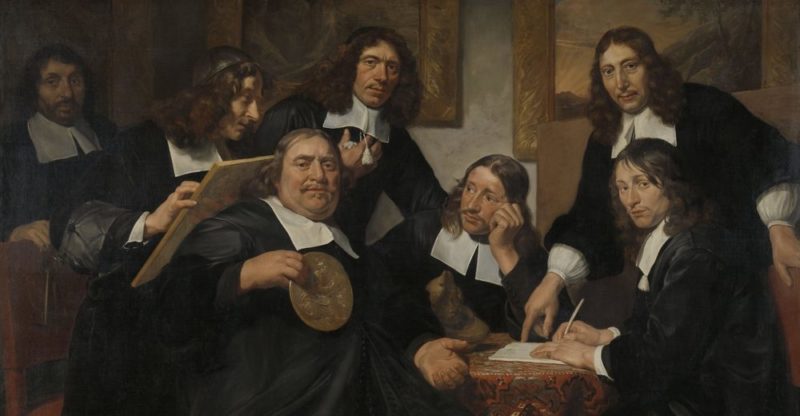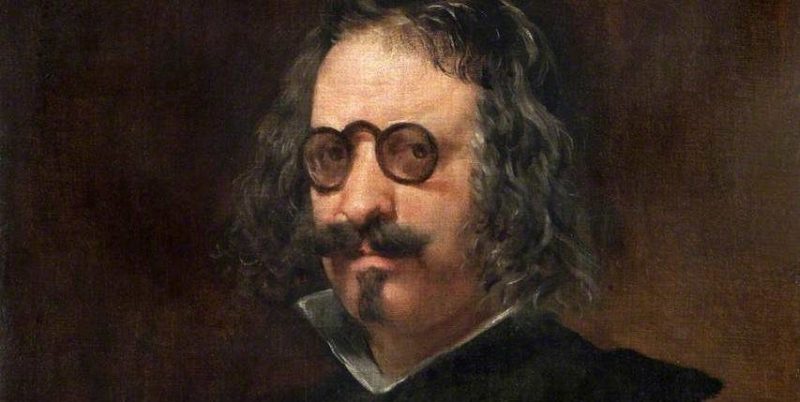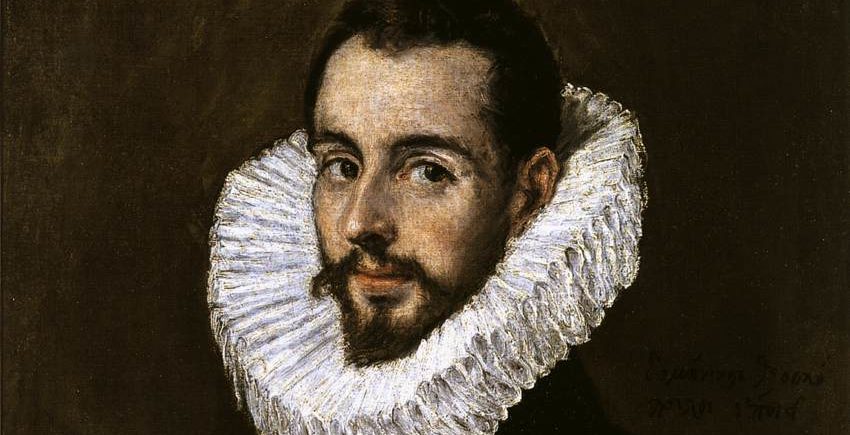We explain what the Golden Age was, its aesthetic periods and main authors. Also, its characteristics, trends and more.
What was the Golden Age?
The Golden Age or Spanish Golden Age was a period of flourishing of the arts and literature in the Spain of the Habsburg dynasty or the Habsburgs. It is a period without defined dates, usually over a century despite its name, whose beginnings would be after the Spanish Reconquest, around 1492, and its ends around 1681, the year of the death of Pedro Calderón de la Barca.
Origin of the term Golden Age
The term "Golden Age" was devised by Luis José Velázquez , Marquis of Valdeflores, who was an 18th century scholar and antiquarian. He used it for the first time in his study Origins of Castilian Poetry of 1754, although by this he was referring exclusively to the 16th century. The term would later be rescued and used to name the entire period of the 16th and 17th centuries.
Events of the beginning and end of the Golden Age
 The publication of the Castilian Grammar of Nebrija in 1492 , as well as the arrival of Columbus to the New World or the end of the Spanish Reconquest, are normally considered as the events that start the period of the Golden Age.
The publication of the Castilian Grammar of Nebrija in 1492 , as well as the arrival of Columbus to the New World or the end of the Spanish Reconquest, are normally considered as the events that start the period of the Golden Age.Likewise, the signing of the Treaty of the Pyrenees between Spain and France in 1659 , and the death of the author Pedro Calderón de la Barca in 1681, are the events that put an end to it.
Aesthetic periods of the Golden Age
The Golden Age is considered to encompass two distinct aesthetic periods:
- The Spanish Renaissance. It takes place in the 16th century during the reign of the Catholic kings Carlos I and Felipe II, marked by a very particular interpretation of the Italian Renaissance influences in confluence with properly Iberian aesthetic forms, such as the result of syncretism with the Moors.
- The Hispanic Baroque. It takes place in the seventeenth century during the reign of the Catholic kings Felipe III, Felipe IV and Carlos II, and presents a true explosion of the plastic arts and literature in a style of its own abundance of forms and daring social themes.
General trends of the Golden Age
 The Golden Age was characterized by a trend towards the popularization of humanistic knowledge , which strengthened the genres of satire and popular comedy, which had its correspondence in the picaresque novel and, above all, in the polyphonic novel whose seed represents the Quixote of Cervantes .
The Golden Age was characterized by a trend towards the popularization of humanistic knowledge , which strengthened the genres of satire and popular comedy, which had its correspondence in the picaresque novel and, above all, in the polyphonic novel whose seed represents the Quixote of Cervantes .The music , the painting and sculpture were also important trends fueled by the Mannerist taste for exaggeration of forms and abundance of content (from which nowadays the use of the word baroque , ie recharged) and anti-classic architectural styles.
Golden Age Literature
 The literature of the Golden Age reached a unique splendor in universal literary history, thanks to various trends:
The literature of the Golden Age reached a unique splendor in universal literary history, thanks to various trends:
- The picaresque novel. Starring rogues , that is, poor and devious young people who made their living taking advantage of others and their ingenuity. It will be an important archetypal model in world literature.
- Ascetic and mystical poetry. Of catholic roots, in which the poets poetically explored their religious call.
- The satire. In both poetry , narrative and dramaturgy, satire and mockery of solemn classicism was central to the literary imaginary of the Golden Age.
- The comedy. The theater was one of the great winners of the Golden Age, with more than 400 works composed by great names that would go down in the universal history of letters.
Authors of the Golden Age
 The great authors of the Spanish Golden Age were:
The great authors of the Spanish Golden Age were:
- Miguel de Cervantes. Writer of Don Quixote, as well as Exemplary Novels and other forms of narrative that would be central and fundamental to the world literature of Europe .
- Luis de Góngora. Poet and playwright, whose aesthetic tendency within poetry would be known as culteranismo or gongorismo.
- Saint John of the Cross.Mystical poet, religious by trade, reformer of the Order of Our Lady of Mount Carmel and of the Order of the Discalced Carmelites. Since 1952 he has been the patron saint of poets in the Spanish language.
- Saint Teresa of Jesus. A religious and co-founder of the order of the Discalced Carmelites, she is considered together with Saint John of the Cross the summit of Spanish mystical poetry.
- Francisco de Quevedo. One of the fundamental authors of Spanish literature and author of poetry, narrative and dramaturgy.
- Tirso de Molina. A playwright, poet and storyteller, a Mercedian religious, he is considered one of the three greats of Spanish Baroque dramaturgy.
- Pedro Calderón de la Barca. Second of the three great playwrights of the Golden Age, he is the author of the famous Life is a Dream , he was also a priest of the Order of Santiago.
- Lope de Vega. The third of the trinity of great playwrights of the Golden Age and one of the most prolific authors in world literature. He renewed the formulas of the theater for the time and was the author of more than 3,000 sonnets, three novels, four short novels and an epic .
Cities during the Golden Age
During the Golden Age, the most important Spanish cities , the scene of the artistic and cultural flourishing, were Seville, Madrid, Toledo, Valencia, Valladolid and Zaragoza .
Sciences in the Golden Age
The sciences also received a considerable boost during the Golden Age, despite the strong Catholic and inquisitorial tradition of the culture. Spanish , which often represented a conservative backwardness with respect to the rest of Europe.The use of the knowledge inherited from the Arabs, as well as the exchange of goods with the New World , led to an interest in physics, chemistry, pharmacology and medicine.
Golden Age painting
 Painters of the stature of Diego Velásquez (belonging to the Baroque) , the "Greco" Doménikos Theotokópoulos (belonging to Mannerism) headed an extremely important pictorial movement in the Spain of the Golden Age.
Painters of the stature of Diego Velásquez (belonging to the Baroque) , the "Greco" Doménikos Theotokópoulos (belonging to Mannerism) headed an extremely important pictorial movement in the Spain of the Golden Age.
Legacy of the Golden Age
Apart from the great artistic works that this period bequeathed to humanity, the foundation of the Royal Spanish Academy (thanks to the philological studies of Antonio de Nebrija), the founding of Universities and the dispute regarding the monstrous nature of the events are attributed to him. committed during the conquest of America .The above content published at Collaborative Research Group is for informational and educational purposes only and has been developed by referring to reliable sources and recommendations from technology experts. We do not have any contact with official entities nor do we intend to replace the information that they emit.
Passionate about understanding and contributing to a world that does not stop changing. New forms of Work, Sustainability and Technology. For many years he has worked as a creative for large international companies. He has a Ph.D. in information technology and he has been doing quantitative research in the interdisciplinary areas of information systems, cyber security, data analytics and artificial intelligence. He continue to look for creative solutions through technology to help companies to be more humane and sustainable..
Leave a reply
Your email address will not be published. Required fields are marked *Recent post

Sport: What Is It, Types, Risks, Features, Characteristics and Examples

Dogs: Emergence, Features, Characteristics, Feeding and Breeds

Story: Definition, Elements, Structure, Features and Characteristics

